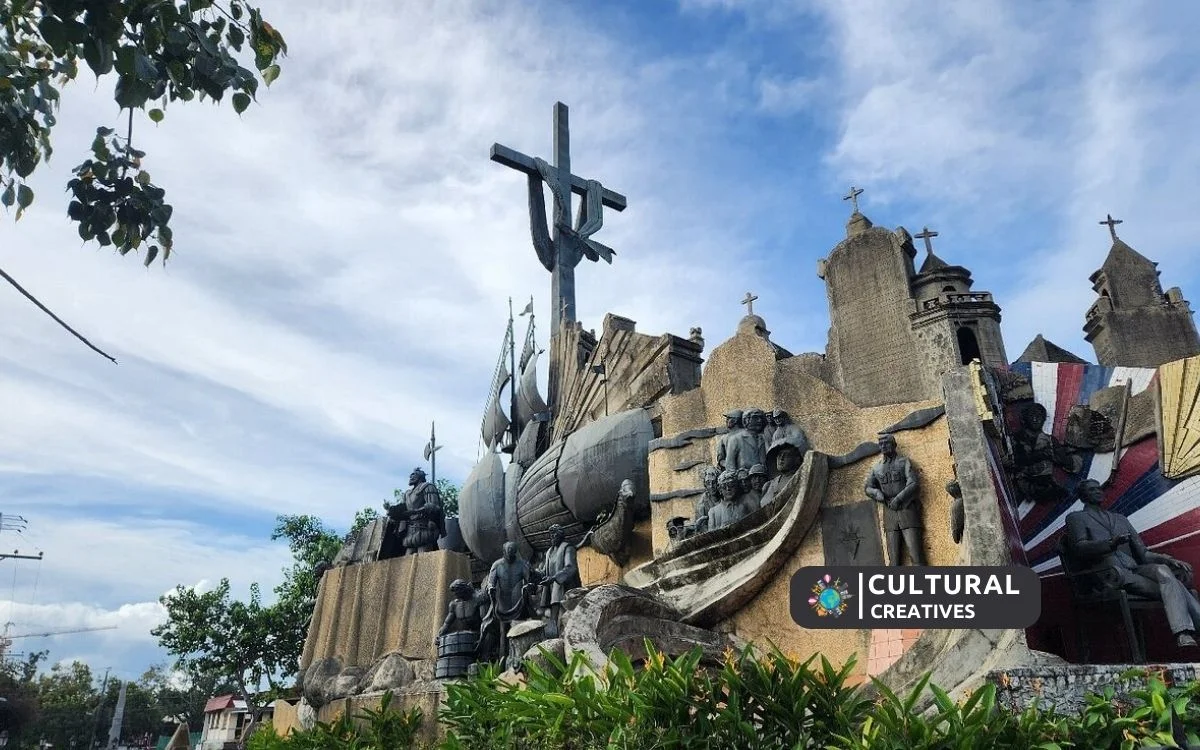The Heritage of Cebu Monument is a tableau of sculptures depicting significant historical events. It sits at the heart of Cebu City, Philippines.
This landmark, conceived by local artist Eduardo Castrillo, serves as a testament to the rich tapestry of Cebu’s past. The monument showcases scenes from the fateful battle of Mactan to the beatification of Pedro Calungsod, encapsulating centuries of history. This iconic structure is not only a visual feast but an educational site attracting tourists and students alike.
Located in the historic Parian district, the monument functions as an intersection between the nostalgia of old Cebu and the vibrancy of its future. As a point of interest, it provides a comprehensive narrative, making it a must-visit for anyone seeking to understand the province’s cultural and historical journey.
The Genesis Of The Heritage Monument
The Heritage of Cebu Monument stands as a testament to the rich history of Cebu. Conceived by the talented sculptor Edgar Castillo, this landmark celebrates the pivotal moments and figures in Cebuano past. Castillo’s vision brought together bronze, brass, and steel to craft a tableau that spans centuries of events.
Each detail of the monument reflects Cebu’s journey. From the earliest native settlers to significant events like the Battle of Mactan, Castillo’s creation captures the pride of Cebu. The monument serves as a visual narrative, inviting onlookers to explore Cebu’s historical timeline. The intertwining of the city’s religious, cultural, and political milestones can be seen in the sculpture’s intricate design.
A Walk Through Time
The Heritage of Cebu Monument showcases the rich history of Cebu. It is a grand display of sculptures. Each piece tells a part of Cebu’s story. Cebu has many stories from different times. You can see Spanish galleons, Saint Pedro Calungsod, and the Battle of Mactan in the monument.
The artwork is made from concrete, bronze, brass, and steel. Standing in the center is Datu Lapu-Lapu, a local hero. He fought against Magellan. Many tourists and locals visit this place. They come to learn and take pictures. The monument is in the old Parian district of Cebu City. It’s easy to find and free to visit.
Built by national artist Edgardo Castrillo, it began in 1997, and it was finished in 2000. It brings the past back to life. Kids can learn much from seeing these sculptures. It’s like traveling in a time machine.
Architectural Marvel And Artistry
The Heritage of Cebu Monument showcases the deep historical roots of the region. Crafted by national artist Eduardo Castrillo, the structures truly shine. The monument sports a complex arrangement of sculptures made from a blend of bronze, brass, steel, and concrete.
Skilled artisans used traditional methods mixed with modern techniques. Builders paid close attention to details. The result is a stunning tribute, highlighting moments from Cebu’s past. Each element stands as a testament to the culture and Pride of Cebu.
Cultural Significance And Legacy
The Heritage of Cebu Monument stands as a proud symbol of Cebu’s rich past. It showcases the stunning tapestry of the island’s history through its intricate sculptures. This monument serves as a crucial reminder of the various events and significant figures that shaped Cebuano culture.
Exploring the monument, visitors witness the remarkable journey of Cebu. Each part of the monument tells its own story, reflecting the values, traditions, and resilience of the Cebuano people. It encapsulates the essence of their identity in physical form. It also serves as an invaluable educational tool, offering locals and tourists insights into the Cebuano way of life.
Their connection to this monument goes beyond simple aesthetics. It enhances community pride and strengthens their social fabric. Schools often visit, using the site to teach students about Cebu’s heritage. The monument is not only a feast for the eyes but also food for thought, sparking conversations on history and heritage among its observers.
Conservation Efforts
The Heritage of Cebu Monument faces various preservation challenges. Harsh weather affects its structures. The materials used can also decay over time. These issues call for continuous conservation efforts.
Local communities play a vital role in preservation. They organize clean-up drives and educate others. Schools and local artists often raise awareness about the monument’s value. This team effort helps protect the site for future generations.
Visiting The Monument
The Heritage of Cebu Monument stands as a proud landmark. Locals often visit to reflect on their city’s rich history. For tourists, it’s a must-see for an authentic feel of Cebu’s past. Every corner tells a story of epic battles, daily life, and grand ceremonies. Bringing a guide might enrich the experience, revealing hidden tales behind each sculpture.
Visitors should show respect while at the monument. Quiet voices help maintain a peaceful atmosphere. Touching the sculptures can wear them down. So, visitors must keep their hands to themselves. Always walk on designated paths. And finally, littering is a big no-no – always use the bins provided.
| Best Practices | Explanation |
|---|---|
| Maintain silence | Keeps peace |
| No touching statues | Preserves them |
| Stay on paths | Protects site |
| No littering | Keeps it clean |
Conclusion
As our journey through the Heritage of Cebu Monument concludes, we are reminded of its profound significance. This landmark is not only a celebration of Cebu’s storied past but also an inspiration for future generations. It stands as a testament to the enduring spirit of the Cebuano people, inviting visitors worldwide to partake in its rich cultural tapestry.
Let this monument prompt us to keep exploring the treasures of history that lie within our world.






